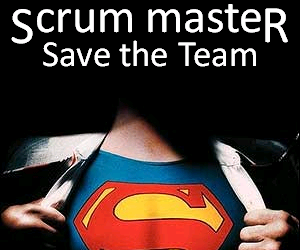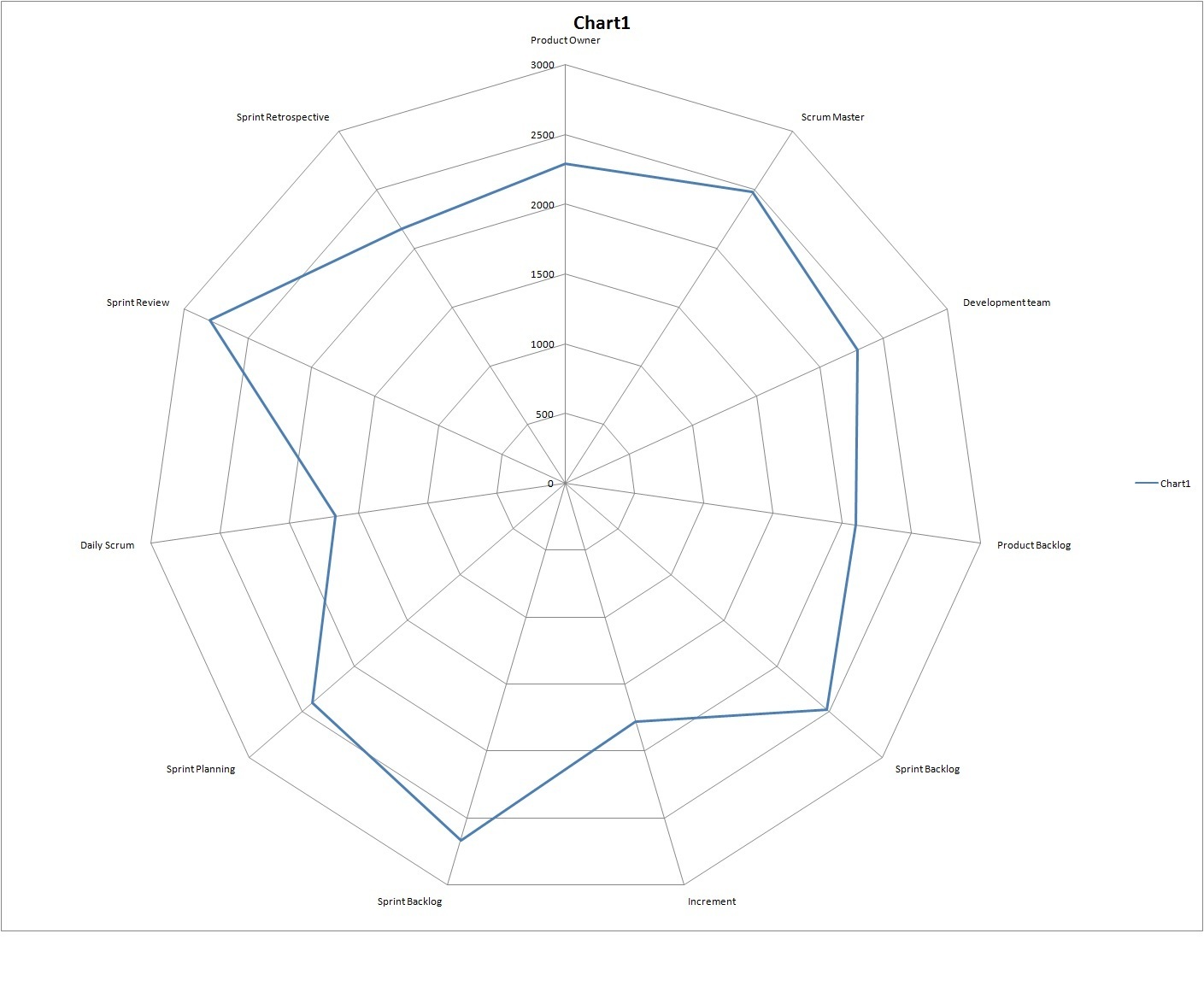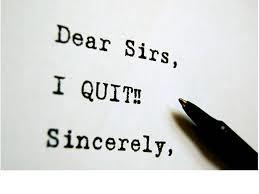Table of Contents
Introduction
There are a few roles in the framework Scrum but one of them is very complicated to fill out. Why does it happen? Because we used to work with corporate hierarchies so when a company wants to adopt Scrum as a framework the company have to know that there is no boss or leader in Scrum teams. Then the following question is but who will help the team to remove organizationals impediments or who will coach (and motivate) the team to follow the Scrum ceremonies and practices. Well, the answer is very simple: The Scrum Master who will be working with the team to protect the use of Scrum and serve to each team member to reach their goals.
Durign this short ebook you will find what the main duties and tasks of Scrum Master, a couple of games to introduce everybody in the company in the framework and last but not least, when a good Scrum Master has to say goodbye to the company.
I hope you enjoy the book!!
What does the Scrum Master actually do?
There are three fundamental roles in the Scrum method of agile software development: the Product Owner, the Scrum Masterscrum master pic, and the team.
Here is my thought on the Scrum Master roles & responsibilities:
- Servant leader: The Scrum Master serves as a facilitator for both the Product Owner and the team.
- Reporting and communication: Track iteration progress (day-to-day work), report obstacles, make sure iterations commitment will be fulfilled, point out bottlenecks in the delivery process.
- Keeps the process healthy: he or she is responsible for the scrum processes agreed in the project
- Remove impediments: Scrum Master should do everything in his or her power to remove obstacles that are preventing the team from accomplishing its sprint goals.
- Resolve conflicts: resolving conflicts between the team members.
- Helps create visible information radiators: SM has to implement backlog as a physical board i.e. to radiate information a team’s progress to all stakeholders, including the team itself.
In the next chapter I will refer about empovering the Scrum Master so he can do his job properly.
Empower the Scrum Master

Scrum Master is the servant leadership, he is the guy who is available all day long to help every team member including the Product Owner. However, he has no special powers or authority so many times he has to deal with bureaucracy that at least in South America is present in the majority of big companies.
How to deal with this usual challenge?
The best approach to figure it this issue it is to empower the Scrum Master with some powers such as: permission to buy everything related to small items (post it, sharpies, etc) to build (and maintain) a physical board (and other materials to conduct Sprint Plannings and Retrospectives as well).
Secondly, if every time that any of team members has an issue with their email account (believe that is usual problem in many Chilean companies) Scrum Master has to be able to talk with Help Desk in order to solve this issue as soon as possible without raising a ticket to enter in a queue (with a lot of similar issues). Thirdly, when the company has many layers of managers the simple thing as buy new chairs (they only have to be comfortable) demands one (at least) month of getting the approval of a couple of managers and other couple of weeks to have them at the office.
Thirdly, as Scrum Master you have to help developers to improve their performance but what about if they have to work with old equipment (I have to deal with all of this with my last two clients) that delays their work. Furthermore, I read similar issues that another Agile Coach mentions in Linkedin about buying hardware is a big deal even for huge companies that are able to afford the purchase without hesitate.
Rewards
Everybody likes to get a good feedback for his work so to send email of congratulations is free but every company needs to invest a little on team buildings such as: free breakfast after a tough Sprint or buying some candies and soda to share during a Retrospective. I am talking about allowing Scrum Master to have the decision to do all the things that mention before without raise several tickets or discussing with several managers to obtain useful things for the team!!!
As Scrum Master you need to have a toolkit of games to introduce new team members and stakeholder in Scrum. I will cover this in the next two chapters.
Scrum Roles Game
One of the best ways to know if a new Scrum team knows very well about their duties is to play a game using all the tasks and responsibilities of each Scrum role. Thanks to Tastycupcakes website I am using this simple but clear game about the duties of each role: Scrum Master, Product Owner and Team.
This game is called Scrum Roles and Responsibilities Game and it was posted by Andrew Rusling on the website.
http://tastycupcakes.org/2014/01/scrum-roles-and-responsibilities-game/
Indeed, I took the image below from the website as well.

Timing: 15 minutes to run, 30 minutes to prepare (once only)
Materials:
32 Index Cards of one colour (I choose blue). 7 Index Cards of another colour (I choose pink). A permanent marker pen (i.e. sharpie). Two flip chart pieces of paper (A0 size) or large pieces of butcher’s paper. A very large desk or two desks large enough to hold the two pieces of paper. Instructions:
Overview
This game quickly builds understanding of the subtleties of the Scrum roles and responsibilities. Once you have prepared the cards (in the preparation instructions) you can easily repeat this game at a very low set up cost.
Preparation
Split each piece of paper into three equal sized sections and label each section: Team, Scrum Master, Product Owner. You will be able to keep and reuse these pieces of paper for numerous instances of the game.
Write out the two sets of index cards
Blue cards (Primary Responsibility)
- Ensure Quality
- Attend Sprint Planning
- Attend Sprint Planning
- Attend Sprint Planning
- Attend Sprint Review
- Attend Sprint Review
- Attend Sprint Review
- Attend Daily Standup
- Attend Daily Standup
- Attend Sprint Retrospective
- Attend Sprint Retrospective
- Attend Backlog Grooming
- Attend Backlog Grooming
- Attend Backlog Grooming
- Design
- Build
- Test
- Integrate software
- Deploy
- Improve process
- Improve technical practices
- Prioritise Product backlog
- Talk to stakeholders
- Track progress of the sprint
- Make Product Backlog visible to all
- Create Product backlog items
- Resolve Technical impediments
- Resolve organisational impediments
- Facilitate Scrum events
- Ensure Scrum rules are followed
- Coach team
- Track progress of the release
Pink cards (Secondary Responsibility)
- Attend Sprint Retrospective
- Ensure Quality
- Ensure Quality
- Attend daily standup
- Create product backlog items
- Improve process
- Improve technical practices
How to run the game
For six to twelve people
Split group into two teams of three to six people each.
Hand each group a set of index cards, asking them to shuffle them and evenly spread them out among the group.
Place one prepared sheet of paper in front of each team.
Ask them to take 2 minutes in silence to place their index cards against the role that is responsible for the items listed on each index card. Explain that there are some duplicated items. Some the duplicated items have Primary(blue) cards and Secondary(pink) cards. Meaning that some the roles carry more/or less responsibility for that item.
After placing the index cards the teams now have 5 minutes to gain consensus as a team about the placement of the cards. They should discuss items that they disagree with within their team.
After the teams are comfortable with their placement (you will be able to tell as the conversation will die off) ask them to swap tables and review the other teams work. When they find any placements that they disagree with they should calmly discuss this with the other team.
Learning Points:
Often the teams will come to appropriate conclusions through the discussions that they hold as they find cards that they disagree with. However as facilitator you should watch out for situations where they jump to incorrect conclusion or where they miss out on misplaced cards.
One of the regular points that come up during this game is that the Scrum Master does not solve all of the team’s problems / fix their process. The team needs to step up and do this, however the Scrum Master is responsible for making it happen.
To conclude, this game is a good way to know about the knowledge of your Scrum team!!!
In the next chapter I will introduce a game more fun to use.
The ScrumLiner Game
Every time that entered in a new company I like to play a couple of games in order to check what is the knowledge of Scrum ceremonies because of that I always look for different games. One of the games that I found was the ScrumLiner Game. This game was posted on http://agilelounge.blogspot.cl/2013/03/the-scrumliner-game-doing-new-scrum.html by Andreas Wintersteiger
In fact, the picture below was taken by his website as well.

“The ScrumLiner Game: A team effort to build an airliner out of paper using Scrum”
That’s the product vision so far. Splitting the class into teams of 5-10 people and having them choose one person as their Product Owner and another one as their Scrum Master, and myself - as the trainer - play the role of a Stakeholder, the president of the aircraft manufacturing company. I hand out a prepared Product Backlog and a vision document. Product Owners are free to decide on the details but should meet my business goals. The Backlog can be refined as the first User Story is quite a big one - we do not estimations at this time as my focus is on collaboration within the team. I have a couple of User Stories that make up the Product Backlog, such as Passenger Cabin, with at least 20 windows, doors and emergency exits, Wings, Landing Gear, Tail Fin and Cockpit. The Backlog cards are actually quite detailled and have a list of acceptance criteria on the back side (you get the idea).”
Rules
The idea of the game is to play three Sprints (I hope your teams got a great aircraft in that time). Each Sprint last twenty minutes.
Sprint Planning
The author gives two minutes to each team to discuss about the Sprint Goal and what user stories will be finished during the Sprint.
Sprint
In each Sprint the team has to do the Daily meeting to “Inspect and Adapt”.
Sprint Review
After the end of each Sprint the team has to show the “shippable” to the Product Owner and stakeholder (Coach). It has to last only two minutes
Sprint Retrospective
After the Review the team has to do the Retrospective in order to analyze their performance and decide about improving the process.
To sum it up, during the game the team will navigate for each Scrum ceremony.
After many sprints the Scrum Master has to check what is the status (or health) of Scrum in the team because of that I will introduce a poweful tool in the next chapter.
Scrum Team Self-Assessment
One of my colleagues Ton Van Kaam (he works in Netherlands) mentioned about a spreadsheet to check how healthy is Scrum Team. Metrics are not on my top list to follow but I would like to explore every Agile metrics before deciding about how good (or bad) it is.
After reading a little about Scrum Team Self-Assessment I realized that this metrics is focused on check about the process so I started using it but without showing to my teams. Why? Because I prefer to validate the results before creating any panic on team members.

How does it work?
Well, you can validate different aspects of the process such as:
- Product Owner: there are many features that provides information such as:
- There is a person who fulfills the role (you have to enter a number in a scale from 0 to 100)
- Product Owner write and prioritize user stories
- Product Owner listens suggestions from the architect and development team and stakeholders.
- Product Owner is local or remote
- Product Owner has the skills to bring the vision to others
- Product Owner defines the Sprint Goal
- Scrum Master
- There is a person appointed to fill the role of Scrum Master (with the same scale defined above)
- Scrum Master facilitates Stand up, Sprint Planning and Sprint Retrospective
- Scrum Master helps to propagate and explain Scrum. Both to the Scrum Team and to third parties who are in contact with the Scrum Team.
- Scrum Master is a servant leader, he leads by coach and train, not to say what to do next.
- Development Team
- Development team size 6+- 3 professionals
- There are not sub-teams within the team
- Team members are dedicated assigned to the team (>80%)
- Product Backlog
- Sprint Backlog
- Increment
- Sprint
- Sprint Planning
- There is a sprint planning
- Held within the first eight hours of the Sprint
- Daily Scrum:
- Every day, same time, same place
- The entire team is present, remote team dialing
- Sprint Review
- Sprint Retrospective You can add more features or remove some aspects in order to start with something simpler.
Last but not least, take the Agile value “Individuals and interactions” into account so every metric can be good but you should focus on metrics if your team is new!!!!
Scrum Master leaves the company

Everybody has been in the position to quit the company for several reasons but as Scrum Master you have to work (or at least it is my point of view) in Agile company. What does it mean? If you are working as Scrum Master you are the man in charge of Agile philosophy, it means you are an Agile evangelist so it is your duty (and this is mandatory) to improve Agile skills of each team member and of course this include the Product Owner as well.
Many times I found (and read) that a lot of companies adopted Scrum to follow the trend but they keep working as waterfall. For instance, managers decided when (and worse yet which features must be released without asking the opinion of the team) new product or new features must be delivered without involving the team. Later the team feel frustrated because they have to commit for all the stuff that managers has decided.
Scrum team
Other bad smell happens when managers took the decision to change one team member to other team without considering the opinion of Scrum Master, Product Owner or anything else.
Scrum Master knows every team member than any manager. Why? Because he is with them all the daylong so he has more knowledge about what will be the impact to change someone or remove a couple of team member in order to create a new team.
Even worse, many times I run into with small teams (i.e. one developer and one tester) and when I asked to the managers why you have this couple of guys to work alone in one project (it doesn’t matter is small or big project) I always got the same answer: They are focus only on this project. Yes, but you has never considered a team with such few guys.
Last but not least, if the company want to fill in some roles (i.e. Product Owner) with guys who are not the right you have to consider seriously to leave the company. Why? Because you were hired to help the company in the transition of Waterfall to Agile and if the company insisted to keep the status quo you are in the wrong place.!!!!!!
Conclusion
At the end of the book I hope you will realize the hard work that is to fill out properly the role of Scrum Master. Indeed, there is a controvery about the time the Scrum Master has to dedicate to the team. It means, many guys believe that Scrum Master has to work part time and the rest of time they will be able to develop user stories or help other Scrum teams. I strongly recommend you if you are adopting Scrum you have to hire a good Scrum Master to work full time with one team. Then if the Scrum team grows well in the Scrum practices you should share the Scrum Master with another team.
Thanks to read this book and if you have any doubt don’t hesitate to reach me at Email: metlucero@gmail.com, Twitter: @metlucero or chat at Skype (metlucero is my id). Furthermore, you should visit my Agile blog www.agilelucero.com
where you can find many interesting articles.
